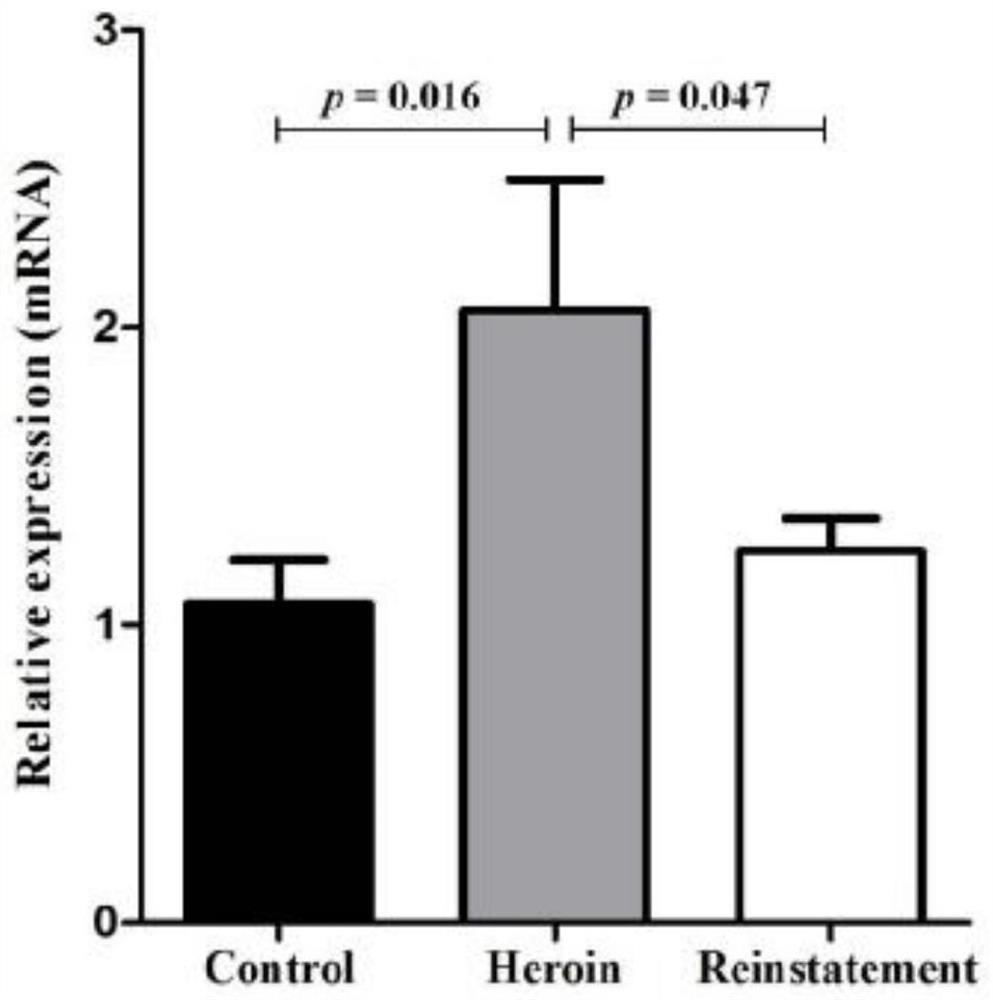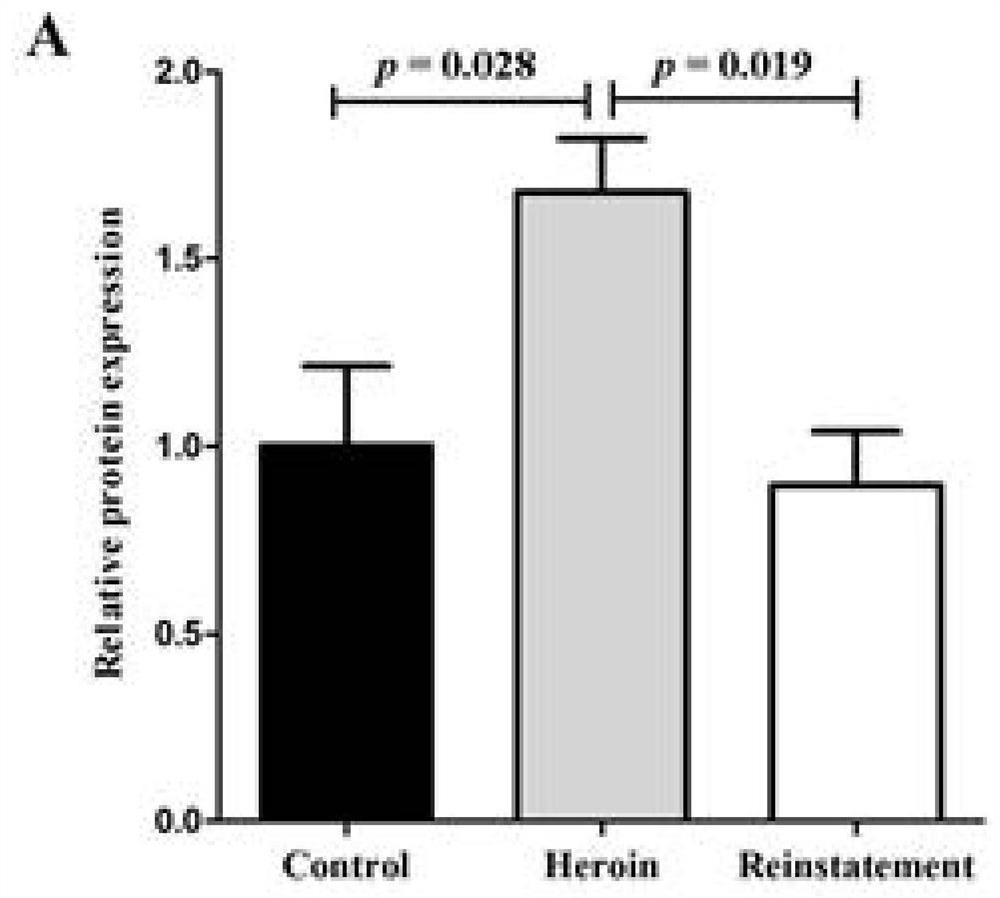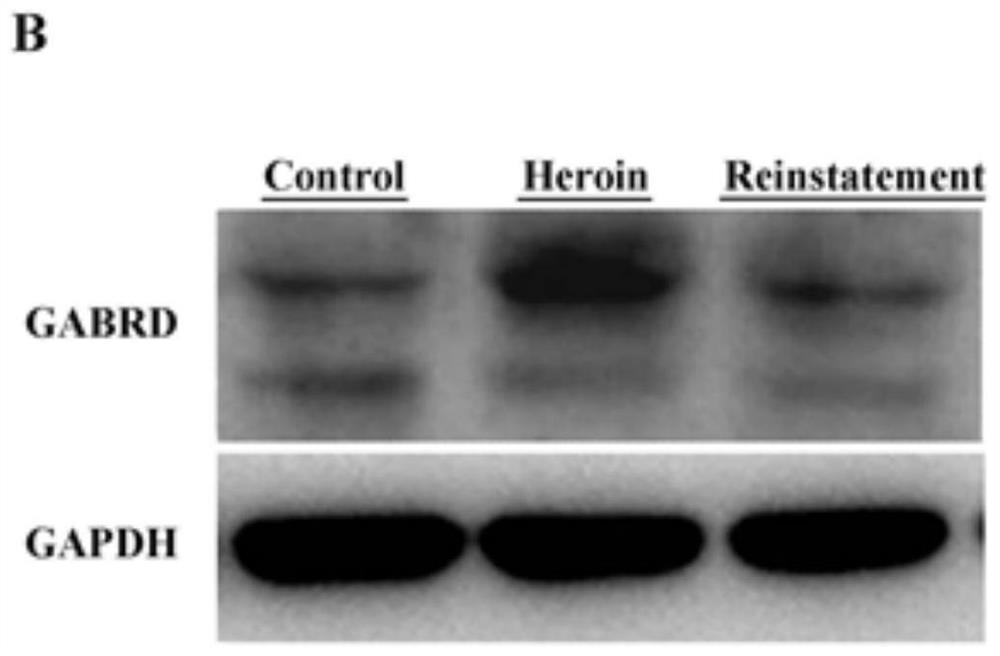Application of GABRD gene in screening drugs against heroin relapse
A heroin and gene technology, applied in the field of molecular biology, can solve problems such as no research reports yet
- Summary
- Abstract
- Description
- Claims
- Application Information
AI Technical Summary
Problems solved by technology
Method used
Image
Examples
Embodiment 1
[0043] Example 1 Establishment of a stable rat heroin self-administration model
[0044] The classic rat heroin self-administration model can well simulate the heroin smoking behavior of clinical drug addicts. Rats can self-administer heroin after training, and the behavioral response rate and The dosage can reflect the behavioral development process of drug addicts from initial goal-directed drug use to compulsive habitual drug use.
[0045] We used the following methods to establish a self-administration model in rats: first, SD rats underwent jugular vein cannulation, a section of PE tube was inserted into the right jugular vein, and passed out of the body through the back, antibacterial and recovery for more than a week after the operation. Subsequently, the rats were trained in 32 self-administration operation cages. Before each training, the PE tube on the back of the rat was connected to the heroin injection system in the operation cage; there were two left and right na...
Embodiment 2
[0046] Construction of embodiment 2 overexpression vector
[0047]The present invention studies the effect of the GABRD gene on the relapse behavior of heroin addicted rats through two technical means of target gene overexpression and gene knockout. Overexpression of the target gene is one of the commonly used means to study gene function. The target gene is introduced into the cell by transfection (including electroporation, liposome transfection, etc.), microinjection or virus infection. In order to establish a stable cell line with overexpression of the target gene, it can be widely used in biological research, and RNAi technology can specifically knock out or turn off the expression of specific genes, so this technology has been widely used to explore gene functions and infectious diseases and malignant diseases. Therapeutic areas of cancer. The GABRD gene overexpression virus plasmid was constructed and transfected into 293T cells to establish a stable transfected cell l...
Embodiment 3
[0113] Example 3 Plasmid Transfection Cell Experiment
[0114] 1. Experiment overview
[0115] Cultivate the target cells in good growth state, that is, 293T cells. The day before plasmid transfection, divide the 293T cells into 24-well culture plates for culture. On the day of transfection, add the plasmids to the groups according to the experimental design for the transfection experiment of target cells. After 24 hours of transfection, the expression of GFP was observed under a fluorescent microscope, and the fluorescence rate was above 80%. After 48 hours of transfection, the cells were collected from the culture plate for detection.
[0116] 2. Experimental steps:
[0117] ①. Prepare target cells
[0118] (1) Take out the cell cryopreservation tube from the liquid nitrogen tank, quickly put it into a 37°C water bath, and shake it from time to time to thaw it as soon as possible;
[0119] (2) After complete thawing, centrifuge at 1300rpm for 3min, wipe and disinfect the ...
PUM
 Login to View More
Login to View More Abstract
Description
Claims
Application Information
 Login to View More
Login to View More - R&D
- Intellectual Property
- Life Sciences
- Materials
- Tech Scout
- Unparalleled Data Quality
- Higher Quality Content
- 60% Fewer Hallucinations
Browse by: Latest US Patents, China's latest patents, Technical Efficacy Thesaurus, Application Domain, Technology Topic, Popular Technical Reports.
© 2025 PatSnap. All rights reserved.Legal|Privacy policy|Modern Slavery Act Transparency Statement|Sitemap|About US| Contact US: help@patsnap.com



